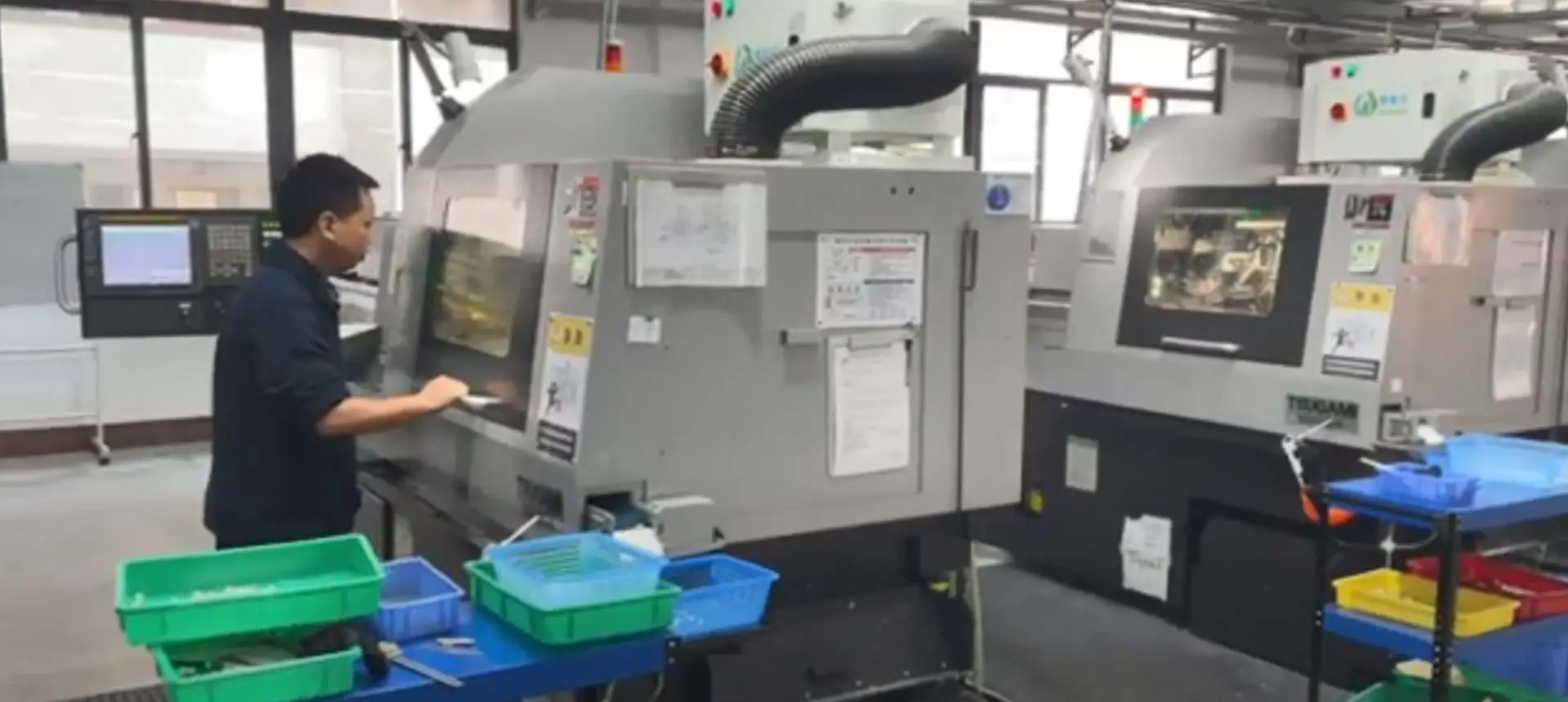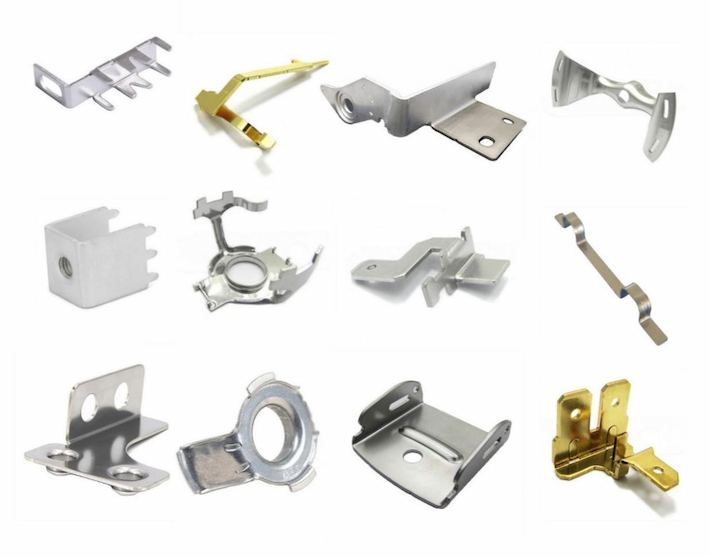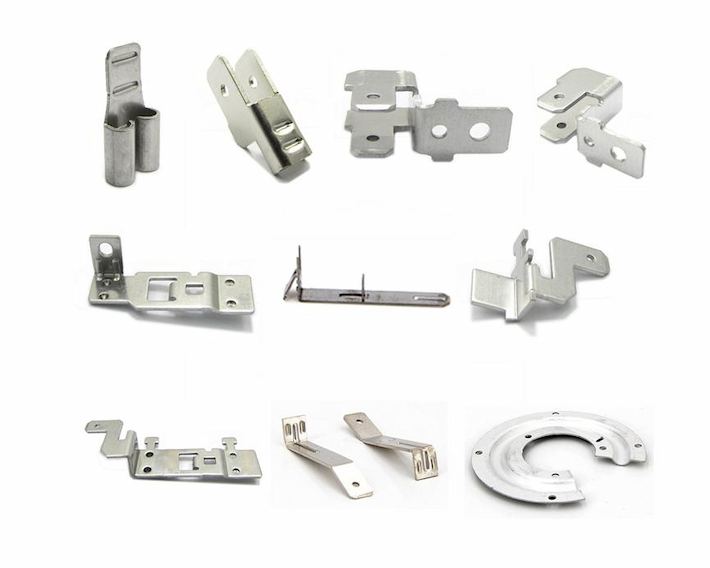
کنترل کیفیت قطعات مُرده های مربوط به اقدامات و فرایندهای مختلفی است که اجزاء مورد نظر و استانداردهای مورد نیاز قرار می گیرند. این شامل استفاده از ابزارهای پیشرفته بازرسی، انجام بازرسی های بصری، انجام چکهای بعدی، و انجام آزمايش عملياتي از طریق کنترل کیفیت سخت، قطعات مُرده ها می توانند بررسی کننده های مشتری، بهبود کیفیت محصولات، و کم کردن نقص، در نهایت به رضایت بالاتر مشتری و عملکرد بهتری
برق های فولادی بی لکه ای HHC Precision به خاطر قدرت برتری، پایداری و مقاومت تسلی شناخته می شوند. فرایند برتری پیشرفته می تواند شکل ها و طراحی های پیچیده ای تولید کند پردازش پزشکي و غذا. ویژگی های ضربه زدن عبارتند از:
قدرت بالا و پایداری:براي بارها و محيط هاي سخت مناسبه
مقاومت فوق العادهرطوبت، مواد شيميايي و دماي بالايي
توليد دقيق:به نيازهاي سفارش شده مشتري ها اطمينان کنيد کيفيت بالا و هزينه ي موثري
استفاده از قطعات مکعب در تولید، مزایای بسیاری از جمله کارایی بالای تولید، هزینه هایی و دقیقت را ارائه می دهد. قطعات هایی که با کمترین زباله ها می توانند به مقدار زیادی تولید کنند و هزینه های کمتر تولید کنند. آنها همچنین بسیار دقیق هستند، که اجازه می دهد کیفیت ثابت و بهبود عملکرد محصول را بهبود. بعلاوه، قطعات تکه های بسیار قابل استفاده هستند و می توانند برای رسیدن به نیازهای طراحی خاص، که اونا رو براي يکي از برنامه هاي مختلفي در صنايع هاي مختلف مناسب مي کنه
برنامه تحویل محکم: نگهداری شدید به برنامه های تحویل رسیدگی می شود. برای انبارهای انباری، دستورالعمل های سریع پس از رسید، با گزینه های دریا، خشکی، یا کشتی هوایی فرستاده می شوند. برای محصولات سفارشی، فرایندهای یکپارچه طراحی به ساختگی طی ۱۴ هفته تحویل سریع را تضمین می کند.
اطمینان کیفیت: یک سیستم بازرسی کیفیت سیستمی و ماشین های 24 ساعته آزمایش هوشمند کیفیت محصول در طول فرایند تولید را تضمین می کند.
پروسه های موثر تولید: پروسه های تولید ما بسیار موثر هستند، که شامل مُطمئنی، ماشین CNC، مرکز ماشین های ماشینی کشيدن، الکترولايي، عشق، تميز کردن، پوشش، جمع کردن، و بيشتر این فرایند ما را قادر می سازد تا خدمات کیفیت بالا و محصولات رقابتی را فراهم کنیم.
با بيش از 23 سال تجربه و يه کارگاه توليد توليد و 33,000 متر مربع، ما خودمون رو به عنوان رهبر اعتماد در صنعت برقرار کرديم و به پارک صنعتي خودمون افتخار مي کنيم
در دنیای اختراع فلز، دو فرآیند مشترک، مُردن و مشت، نقش مهمی در شکل مواد برای برنامه های مختلف ایفا می کنند. در حالى كه آنها مشتركنند، درک تفاوت هاي کليدي بين ضربان و مشت زدن براي توليد کنندگان و مهندسان ضروري است. این مقاله در نتیجه هایی که این فرایندها را از هم جدا می سازد، به این معنی که چه زمانی از هر روش برای نتایج بهینه استفاده می کنند.
برگشت:
استفاده از یک مُرده برای شکل و شکل برگه های فلز و نوار تشکیل می شود. مرگ، معمولاً از فولاد سخت ساخته شده، شامل الگوی مورد نظری است. یک مطبوعات نیرویی در مورد مواد استفاده می کند و باعث می شود که شکل مرگ را بگیرد. این فرایند معمولاً برای ایجاد شکل های پیچیده، الگو ها یا لوگو ها بر روی صفحه فلز استفاده می شود.
مشت زدن:
از سوی دیگر ، با شکستن یک قسمت از ماده برای ایجاد یک سوراخ یا بازی شامل حذف می شود . یک مشت و مرگ استفاده می شود، با ضرب و ضرب خود را مجبور می کند تا سوراخ و شکل مورد نظر را ایجاد کند. پونچی به خصوص برای تولید سوراخ های ساده و ثابت در اجزای فلز مختلف موثر است.
برگشت:
برنامه هایی که طراحی های پیچیده، الگوها یا ویژگی های زیبایی مورد علاقه قرار می گیرند. معمولاً در صنایع مانند خودرویی، الکترونیکی و تولید وسایل برای هدف های تزئین یا عملکردی مورد استفاده قرار می گیرد.

مشت زدن:
پانچینگ برای برنامه هایی مناسب است که به سوراخ های ساده و ثابت نیاز دارند، مثلا در ساخت ساکت ها، پنل ها، يا اجزايي که نياز به باز کردن يونيفرم دارن در صنایع هایی مانند ساختمان، ساخت فلز و HVAC استفاده می شود.

در حالي که مُردن و مشت زدن زمين مشترک در قلمرو اختراع فلزي تفاوت در برنامه های خاصی و نتایجی که به دست می آورند برتری در تولید طراحی و الگوهای پیچیده در حالی که مشت زدن روش انتخاب برای ایجاد سوراخ های دقیق است.
HHC (Haohaichang) یک طیف از گزینه های سفارشی پیشنهاد می کند تا به نیازهای مشتری گوناگون برآورده شود. از نمونه سفارشی شده به تولید کوچک، متوسط و بزرگ، HHC همکاری پایان به پایان فراهم می کند. اچ.چ.چ.چ.چ.چ.چ.اي سرويس بدون ادعايي از نمونه اعتباري تا توليد جمعي ميشه

نمونه سفارشی شده:
HHC اهمیت توسعه اولیه در طراحی محصول و فرایند اعتباری را تشخیص می دهد. با یک تمرکز اختصاصی بر روی مشخصات مشتری، HHC خدمات نمونه سفارشی را پیشنهاد می کند. این مرحله به مشتریان اجازه می دهد که امکان پذیری، طراحی و عملکردی اجزای خود را قبل از اینکه به اندازه ی تولید بزرگتر ارزیابی کنند.
دستورالعمل های کوچک:
برای پروژه هایی که به مقدار محدودی نیاز دارند، HHC دستورهای دسته های کوچک با دقت و کارآزمودگی را می پذیرد. دستورالعمل های کوچک برای آزمایش اولیه بازار ایده ای هستند، که اطمینان می دهد که مشتریان می توانند محصولات خود را با کمترین خطر و کیفیت بهینه معرفی کنند.
ترتیب دسته های متوسط:
همانطور که تجارت ها گسترش می یابند نیاز به دستورات های متوسط رخ می دهد. HHC بدون افزونه از تولید کوچک به متوسط تبدیل می شود و سطح مشابه توجه به جزئیات و اطمینان کیفیت را فراهم می کند. این انعطاف پذیری برای تقاضای رشد مشتریان در صنایع مختلف است.
۴ ترتیب دسته های بزرگ:
قابلیت های HHC به تولید مقیاس بزرگی افزایش می دهد و به مشتریان با نیازهای جمله قابل توجهی دارد. تکنولوژی پیشرفته و یک فرایند تولید HHC تحویل کارآمد و زمانی از دستورات های بزرگ بدون توافق به کیفیت را اطمینان می دهد.
تعهد HHC براي سفارش انعطاف پذيرايي اون رو در قلمرو ساخت فلزي جدا ميکنه از نمونه ي سفارش داده شده به اندازه ي مقياس زيادي توليد ميشه HHC یک سرویس بی سیم و ابتدایی از خدمات فراهم می کند. مشتریان می توانند به HHC اعتماد کنند تا هر مرحله فرآیند تولید کنند و اطمینان حاصل کنند که شرایط منحصر به فرد آنها با دقت و کاربردی انجام شود.
مُرده ي فلزي هم به عنوان فشار مي شناسه فرایند تشکیل کردن برگه های فلز یا خط ها در شکل های مورد علاقه با استفاده از یک مطبوع و مرگ است. این فرایند تولید شامل فشار استفاده کردن به کار فلزی، باعث میشه که اون تغییر یا جابجا کنه به همين خاطر ايجاد شکل يا الگوي مورد نظر. فرایند مُرده های HHC شامل تکنیک هایی مانند برش، مشت زدن، خم کردن، کشیدن، ترکیب، و امسبازی است.
وقتی که یک عمل نخواهد تواند شکل لازم را به دست آورد در یک قرار هر ایستگاه با یک یا چند فرآیند برق ابتدایی برای تکمیل پردازش یک قسمت مشخص از نقطه ی مکعبی مجهز شده است. این مسئله شامل یک توالی پیوسته از جمله برش، خم کردن، ضربه زدن، فشار و شکل است.
ما در شنژن هستیم و پارک صنعتی خودمون در هویدو داریم با 23 سال تجربه در زمينه سازي سخت افزار، ما يک تيم از متخصصان تکنيکي ساختيم که به پيشرفت پيوسته و يه تيم مدير تجربه داره با تشکر از تجهيزات پيشرفته و حمايت سازماني HHC قادر است تا تخصص خود را در طراحی و تولید در صنعت سخت افزار افزایش دهد در هنگام اطمینان محصولات و خدمات با کیفیت بالا سود منطقي. بنابراین ، ما در هر زمانی با خطرات روبرو هستیم . خوش آمديد که براي بازرسي شرکت ما ملاقات کنيد ساختمان A1، پارک صنعتی رانگ چانگ، نه منطقه هدونگ، هنگکنگ، گوان لان، منطقه لانگها
HHC یک گونه از قطعات مُمپ شده تولید می کند، از جمله نوع کشیدن، نوع فلنگ، نوع کوچک، سیم سیم سیم ترمینال، درست کردن نوع کلیپ، نوع پلاک بهار، نوع ترمینال، و محصولات تیکه ترمینال. اينها به طور گسترده اي در اجزاي وسايل خانگي، اجزاي خودکار، صنايع انرژي جديد هواپيماي کوچيک، رادار ارتباطي و صنعت پزشکي.
تعیین بهترین مواد برای محصولات مُرده شده شامل عواملی مانند نیازهای عملکردی، ویژگی های مادی، محیط عملیات و هزینه است. برای مثال آلیای آلیایی 7075-T6 در سیستم های تعلیق وسایل ماشین مورد استفاده قرار می گیرد، در حالی که ۴۵# فولاد اغلب در سیستم انتقال خودرو استفاده می شود، و ۳۰۴ فولاد بدون اسکلی اغلب برای اندازه گیری لوله های خارج شده است. سي 26000 به طور معمول در رادياترهاي خودرو استفاده ميشه و آلیای مسر-نیکل C70600 اغلب در سیستم های ترمز یافت می شود، در میان بقیه. ما بهترين راه حل راه حلي رو براساس شرايط خاص درخواست مشتري ارائه مي کنيم


